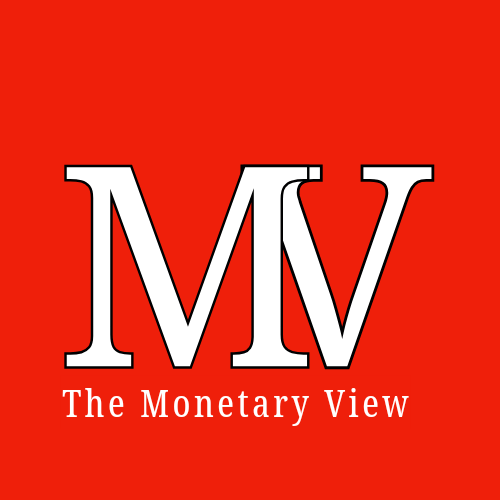Economic growth is a crucial concept in economics that refers to the increase in the production of goods and services in an economy over a specific period. It is typically measured by the growth rate of a country’s Gross Domestic Product (GDP) and is an essential indicator of a nation’s prosperity and living standards. A growing economy is often associated with better job opportunities, improved infrastructure, higher incomes, and increased investments.
This article explores the significance of economic growth, the factors that drive it, and the challenges it presents.
1. Why Economic Growth Matters
Economic growth is vital for several reasons:
- Higher Standard of Living: As the economy grows, it typically leads to an increase in the wealth of a country. This growth provides people with better access to goods and services, improving their quality of life. More employment opportunities, higher wages, and increased social services contribute to an overall improvement in living conditions.
- Government Revenue: Economic growth leads to higher tax revenues without increasing tax rates. When businesses and individuals earn more, they pay more in taxes, giving the government more resources to invest in public services such as education, healthcare, and infrastructure.
- Reduction in Poverty: Sustainable economic growth can help reduce poverty by creating jobs and raising income levels, allowing individuals and families to improve their financial situation.
- Technological Advancement: Growth often coincides with innovation and technological development. As companies grow, they invest in research and development, which leads to new products, services, and more efficient production processes.
- Global Influence: Countries with strong economic growth tend to have more influence on the global stage. They can engage in international trade more effectively and invest in foreign markets, further enhancing their global presence.
2. Key Drivers of Economic Growth
Several factors contribute to the growth of an economy. These drivers can vary depending on the country’s economic structure, resources, and policies. Below are some of the most significant contributors:
a) Human Capital
A skilled and educated workforce is essential for economic growth. Higher levels of education and training lead to greater productivity and innovation. Nations that invest in education, health, and social well-being tend to experience more rapid and sustained economic growth.
b) Capital Investment
Investment in physical capital, such as machinery, infrastructure, and technology, is crucial for increasing productivity. This includes both domestic investment and foreign direct investment (FDI). As businesses invest in better equipment and facilities, they can produce more efficiently, leading to higher output and growth.
c) Technological Innovation
Innovation drives growth by improving efficiency and creating new industries. Technological advancements enable businesses to produce more with fewer resources, which can lead to economic expansion. Countries that focus on research and development (R&D) often enjoy higher growth rates.
d) Natural Resources
The availability of natural resources such as oil, gas, minerals, and arable land can significantly impact economic growth. However, relying too heavily on these resources can create challenges such as resource depletion and economic instability when prices fluctuate.
e) Government Policies
Government policies play a vital role in fostering economic growth. Policies that promote trade, reduce corruption, and create a favorable business environment encourage entrepreneurship and investment. Regulatory reforms, stable legal systems, and effective tax policies also create a foundation for economic expansion.
f) Trade and Globalization
Engaging in international trade allows countries to specialize in the production of goods and services where they have a comparative advantage. This specialization leads to higher efficiency and more robust economic growth. Globalization has enabled countries to access larger markets and attract foreign investment, which can accelerate growth.
3. Challenges of Economic Growth
While economic growth brings many benefits, it also presents certain challenges:
a) Income Inequality
Economic growth does not always lead to equitable wealth distribution. Often, the rich benefit disproportionately, leaving lower-income populations behind. This can lead to increased social tensions and a widening gap between the wealthy and the poor.
b) Environmental Degradation
Rapid economic growth can put a strain on natural resources and contribute to environmental issues such as pollution, deforestation, and climate change. If growth is not managed sustainably, it can lead to long-term environmental damage that could hurt future growth prospects.
c) Over-reliance on Specific Industries
Countries that rely too heavily on specific industries, such as oil or agriculture, can face problems when global demand for those products declines. Diversifying the economy is essential to ensure stable, long-term growth.
d) Inflation
In some cases, rapid economic growth can lead to inflation, where the demand for goods and services outpaces supply, causing prices to rise. High inflation erodes purchasing power and can lead to a decrease in the standard of living if wages do not keep up with rising prices.
e) Unsustainable Debt
To fuel growth, some countries may take on high levels of debt, especially for infrastructure projects. While this can promote short-term growth, excessive debt can become unsustainable and lead to financial crises.
4. Sustainable Economic Growth
Sustainable economic growth focuses on expanding the economy in a way that can be maintained over the long term without depleting natural resources or harming the environment. It involves:
- Investing in renewable energy and green technologies.
- Promoting inclusive growth that benefits all segments of society.
- Encouraging innovation that leads to efficiency without environmental harm.
- Balancing short-term gains with long-term stability.
Many countries are now shifting their focus to sustainable development, ensuring that future generations can continue to benefit from economic growth without facing resource scarcity or environmental degradation.
5. Conclusion
Economic growth is essential for improving living standards, reducing poverty, and enhancing a country’s global influence. The key drivers of growth—such as human capital, capital investment, technological innovation, and trade—help economies expand and become more productive. However, challenges such as income inequality, environmental impact, and inflation must be managed carefully to ensure that growth is sustainable and benefits all members of society.
By implementing sound policies and encouraging innovation, countries can achieve balanced, long-term growth that promotes economic stability and prosperity.







